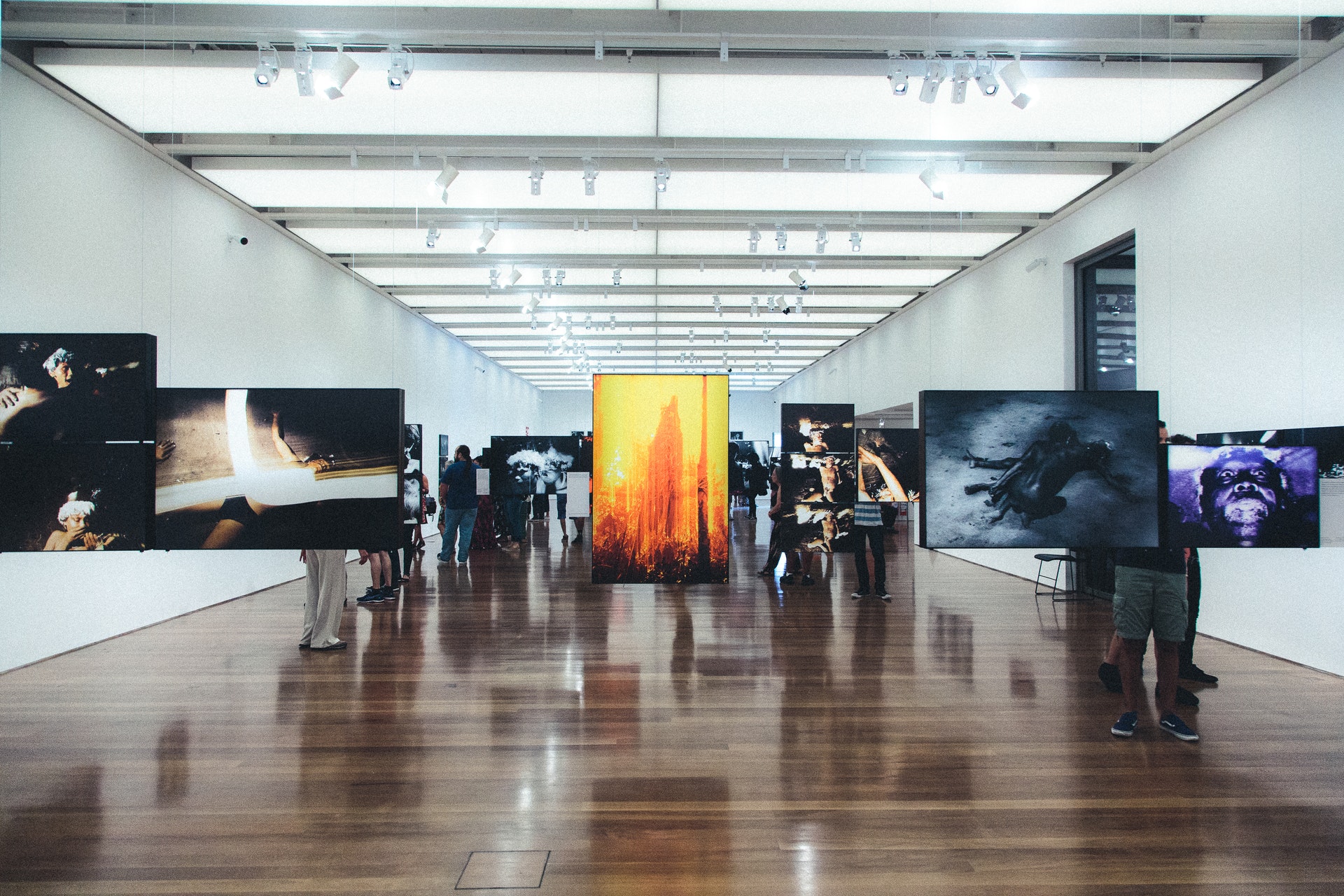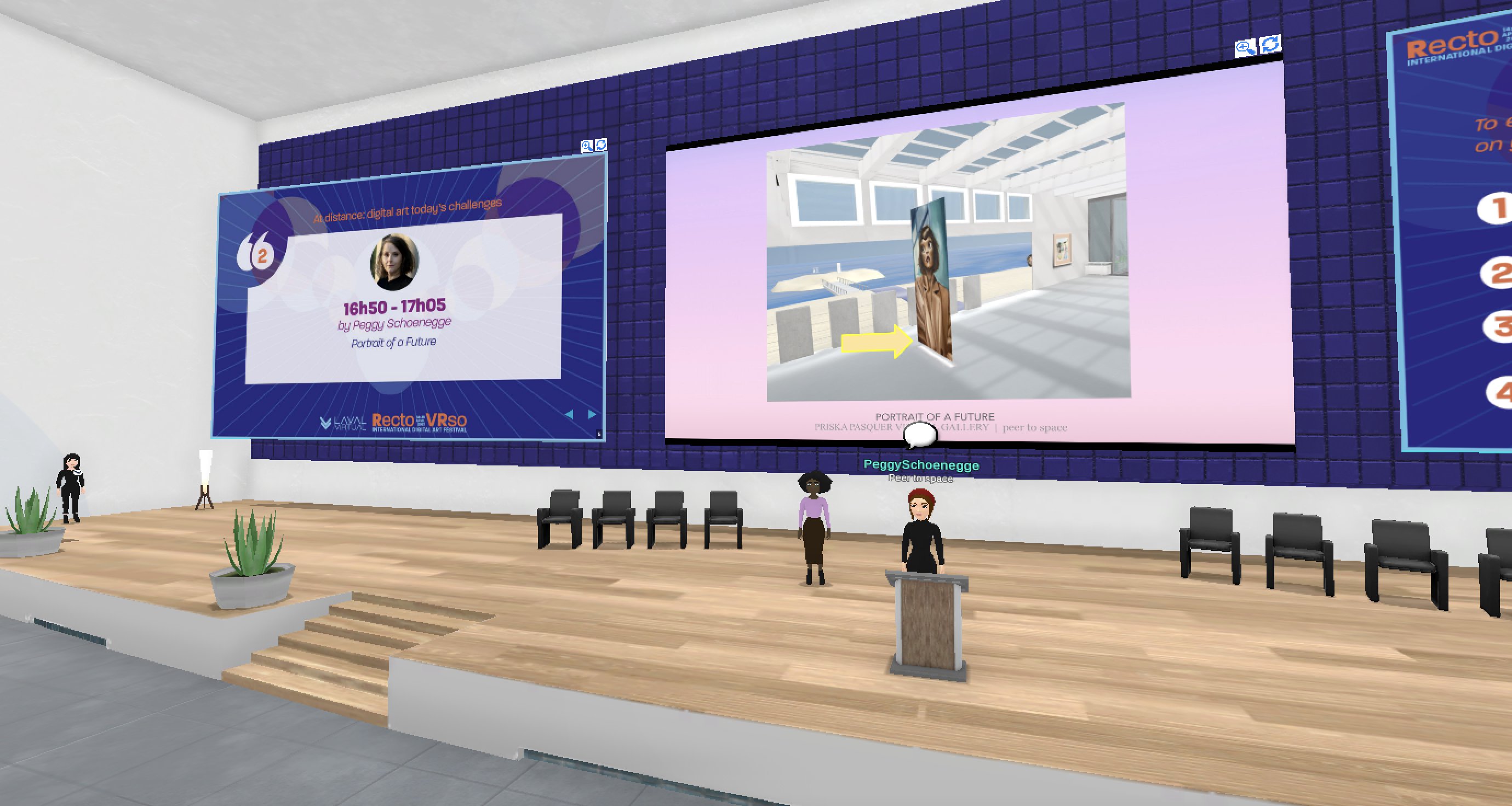
Online art has changed dramatically since the global pandemic.
Crédits photos : Julio Nery (Pexels)
From April 14 to 16, 2021, the virtual part of the international digital art festival Recto VRso was held online in the Laval Virtual World. Many international speakers (digital artists, curators, cultural professionals…) gathered. On April 14th, Maurice Benayoun, Peggy Schoenegge and Maxence Grugier questioned the stakes of online art today, through artistic projects or exhibitions, or observations of these current practices. As for Myriam Achard, Julie Walsh, Giorgio Vitale and Valérie Hasson-Benillouche who intervened on April 15 on the question of curating digital art between real and virtual exhibitions, they shared their experiences during a panel moderated by Elhem Younes.
The art exhibition space becomes virtual
The pandemic that has hit the globe has also had an important impact on the art world. Beyond the negative consequences (closing of art galleries, cancellation of exhibitions…), this particular context gave birth to a new effervescence of creativity. During the sanitary restrictions, the public had no longer access to cultural and artistic places. What are the means for artists to diffuse, show and sell their works? How did the global pandemic push artists to explore new playgrounds?
“Virtual worlds have created a playground for a new generation of artists“, said Maxence Grugier, a journalist specializing in digital art. The cancellation of the exhibitions was a trigger to embrace virtual worlds. They have become new exhibition spaces, but also in-situ creation spaces. These online spaces have also proven to be very useful for the diffusion of art to the public. How did this digital transition take place? What profound changes has this transformation involved?
Online art: an historical trend
Since the 90s, artists have been investing the Internet for the creation and exhibition of new interactive art forms conceived for, or through, this medium. Online art is thus a historical movement to which the pandemic has given a new meaning. Maurice Benayoun, a pioneering figure in digital art, has been working with virtual reality and producing avant-garde works since the 1990s. For example, in 1995 he exhibited “The Tunnel under the Atlantic”, which connected two contemporary art museums on two different continents. The idea was to “connect two cultures by exploring the medium of virtual reality” at a time when the web had just emerged. It was the era of Net Art, as Maxence Grugier explains.
Peggy Schoenegge, a freelance curator in Berlin who specializes in art history, also highlights this rich history of online art. In 1991, the art project “Virtual Museum” was already using new technologies. It is therefore quite natural that she has continued on the path of the virtual today. Her exhibition “Portrait of a Future” is a digital replica of the Priska Pasquer Gallery in Köln, Germany. What she realized with the use of a virtual world as an exhibition space is the freedom of creation: “New possibilities have arisen with the arrival of virtual worlds. There are no more limits!” she said.
For some, the use of virtual exhibitions was brand new. “I do more real exhibitions than virtual exhibitions,” explained Valerie Hasson-Benillouche, founder of Galerie Charlot. “The big difference is that when you create an exhibition, you have to find the monumental work that will dress the space. In virtual art, it’s the space that adapts to the artwork.” The visiting experience is also different: “when you go to a physical exhibition, it’s an experience that you share with other people with whom you exchange.” The particularity of online art forms and current virtual exhibitions has thus raised the question of the visit: how to convince the public?
Virtual museums, online exhibitions: when art goes to the public
With the closing of museums, galleries and cultural centers, we also had to think about the public. How to bring art content to visitors? “The pandemic was a shock to us when it happened. We had to close our doors for a few months. So we decided to reach out to our audience, developing several programs,” explains Myriam Achard of the Phi Center. The first project, “Parallel Lines” is a virtual art residency: “We asked 10 artists to create a work of art in 60 days. At the end of those 60 days, we had an online exhibition on our website.“
The Phi Center also offered the “VR to go” project during the lockdown. This is a service that allowed visitors to rent a VR headset to test the experiences at home. This service was available in 4 locations around the world. A similar project was also offered by Synthesis Gallery: one can rent a VR headset in Europe and the UK, and access a collection of virtual reality artworks produced by artists pioneering the genre. For Giorgio Vitale, founder of Synthesis Gallery, it was important “to continue to bring VR art to the masses and educate the public.” Maxence Grugier rightly recalls that today “art institutions, museums and artists offer virtual tours online“, and therefore more accessible.

The transformation of the artwork and of its status.
The growth and especially the expansion of online art in the wake of the pandemic has caused a profound transformation. It is not only the artists who have changed their working methods, and the institutions that have imagined new exhibition spaces. Sometimes it is the work itself that has evolved: its form, its status, its value, its distribution, the message it carries.
The pandemic has been a source of inspiration for new messages. Julie Walsh presented the “Re-start” project of the Chicago Art Museum: “It is an international artistic reaction to the global pandemic, around urbanization and ecology“. This project asks existential questions: why does history always tend to repeat itself? How can humanity learn from its repeated mistakes? Several pioneering artists who participated in this project question identity and our place in relation to nature.
The artists also ask questions about the work itself: “the status of the art object has been questioned,” says Maxence Grugier. Indeed, by moving from a physical exhibition to a virtual world, what about the status of the work? “What is the position of the original work in the virtual gallery?“, wondered Peggy Schoenegge. Is the digital work only a representation of the physical work? Is the virtual gallery in which the works are located also an art object? Is an immaterial digital work of art as valuable as a tangible physical work?
NFT, blockchain, crypto-art: the digital art market
The value and therefore the sale of digital works was a topic discussed during the conferences. Digital art is as likely to be sold, traded, bought. Maurice Benayoun recalls a project in the city of Taipei in Taiwan where the public was invited to materialize human values with their own thoughts. “At the end, the public receives a QR code that grants them ownership of their work which is now part of their personal collection. After receiving the 3D model, they can start trading and buying.“
Maxence Grugier evokes the NFT (non-fungible token): in the context of art, it is what allows to grant and verify the ownership of a digital work. It is a kind of unique and non-interchangeable crypto-currency. “The NFT is something new in the art world“. The term “blockchain” is also coming up in the digital art market world. The blockchain makes it possible to authenticate a digital work. For Maurice Benayoun, “blockchain should become a medium for artists.” In the digital art market, many questions still need to be asked.
In conclusion, online art is an artistic movement that has existed since the 1990s with Net Art. However, the recent pandemic has shaken it up and more and more actors in the art world have started to make virtual works and exhibitions. This craze for online art has had repercussions on the work: “Today, we digital artists are transforming the concept and form of the work“, concluded Peggy Schoenegge.

